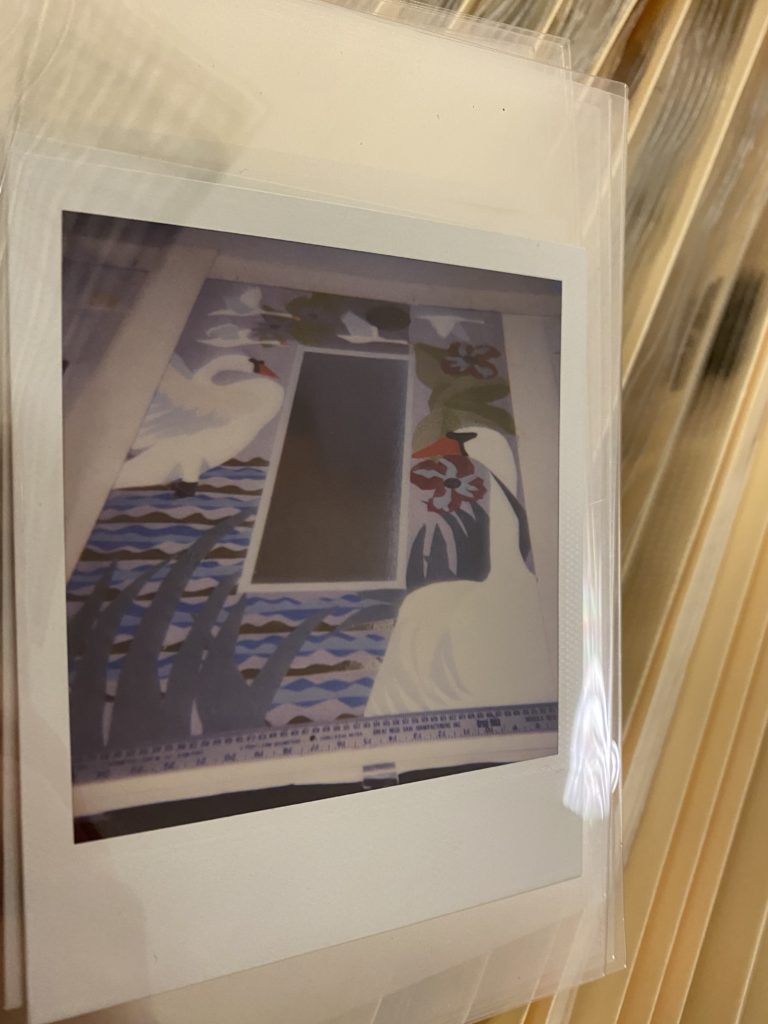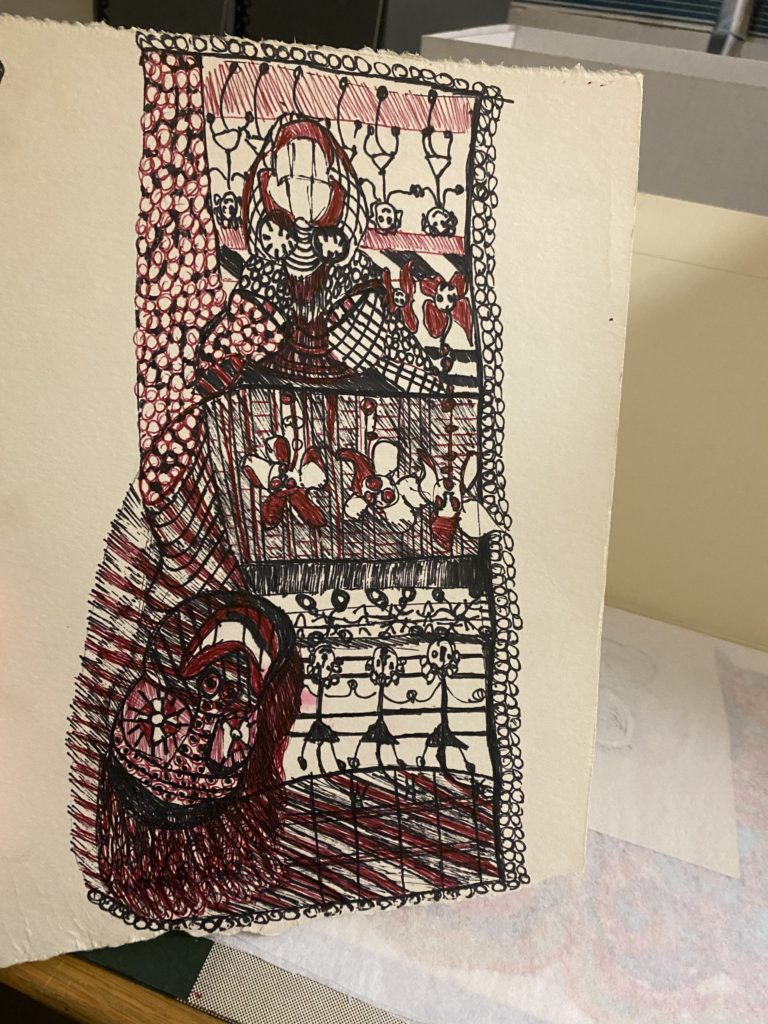I am pleased to say my semester at CGU ended on a great note. I am also pleased to say that Annette’s collection is in its’ final staged before it will be available for researchers. I thought in this post I would give a brief overview of some collection pieces that really stood out to me and why I think this collection is an excellent resource for anyone interested in fine art. One of the pieces that immediately comes to mind when I think of this collection is an interview transcript from 1977 in which Annette was being interviewed by Joan Murray for the Robert McLaughlin Gallery.
In this interview she provides insight into her creative process and how she arrived at textiles as her preferred medium. Another collection piece that stood out to me were some pieces that were ostensibly used as a kind of artistic inspiration. These included vintage magazine clippings that shared an art deco theme, fabric samples that spoke to the value of abstraction and 35mm slides that catalogued the 9 months the artist spent living in Europe. The artist’s labeling indicates that this period was in the early 70’s, with the artist mainly taking residence in Spain. Though the slides indicate she may have spent some time near Istanbul, Turkey as well. Places like these, and others, captured by Annette’s artistic eye immortalize the spirit of the early 70’s.
The images are unmistakably tinged with a spark of freedom and the warm comfort of nostalgia. These images are a resource for any persons interested in the visual arts. Lastly, the 35mm and photographs which bear some of Annette’s textile works and sketches are regarded as the ornate centerpiece of the collection. In these slides and photographs, the viewer can witness Annette’s evolution as an artist, the fluidity possessed through each epoch and the juxtaposed ability of the artists’ works to remain unique. Thus, it is this ‘centerpiece’ that captures the spirit of the collection as a whole.
















